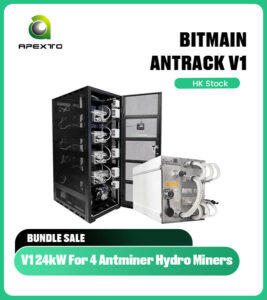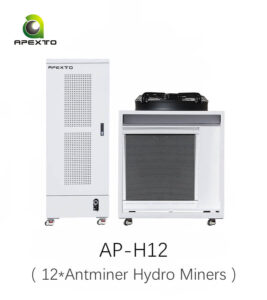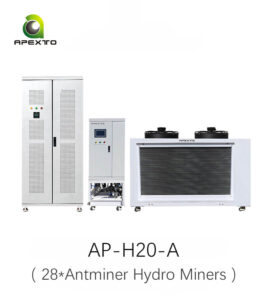Cryptocurrency Mining Explained: From Beginner to Professional Optimization

1. Introduction to Cryptocurrency Mining Basics
Cryptocurrency mining is the core of the digital currency ecosystem. Miners use computer hardware (such as ASIC miners or GPU miners) to solve complex mathematical problems to verify transactions and maintain blockchain security. Miners who solve these problems earn the right to record transactions and are rewarded with newly generated cryptocurrency.
Common mining algorithms include:
- SHA-256 (Bitcoin, etc.)
- Ethash (Ethereum Classic, etc.)
- Scrypt (Litecoin, etc.)
- Equihash (Zcash, etc.)
Different algorithms have different hardware requirements, so miners need to choose the right hardware based on the algorithm of the target cryptocurrency.
2. Key Considerations and Factors Affecting Mining Efficiency
Key Considerations:
-
- Power Cost Control: Power consumption is a major cost in mining, and miners should prioritize areas with low electricity costs when selecting a location. Power costs directly affect mining efficiency, so reducing power costs is key to improving profitability.
- Hardware Return on Investment: It is essential to calculate the balance between mining equipment costs, computational power, and expected returns. Initial equipment investment, electricity costs, and maintenance costs during each mining cycle affect the ROI.
- Network Stability: A stable network connection is crucial for mining efficiency. Frequent network outages can cause miners to miss submitting solutions in time, potentially missing rewards and incurring losses.
- Legal Compliance: Ensure your mining activities comply with local laws and regulations. In some countries or regions, cryptocurrency mining may be heavily regulated or restricted.
Efficiency Limiting Factors:
-
- Hardware Performance: ASIC miners are typically more efficient than GPU miners, as they are specifically optimized for certain algorithms. Hardware performance (such as hash rate and power consumption) directly impacts mining efficiency.
- Cooling Efficiency: Higher temperatures significantly reduce hardware stability. For every 10°C increase, the failure rate of electronic components rises by about 40%. A well-designed cooling system not only improves hardware efficiency but also extends equipment lifespan.
- Algorithm Difficulty Adjustment: As the network hash rate grows, mining difficulty adjusts dynamically. Miners must optimize their operations according to difficulty changes to ensure profitability in each mining cycle.
- Pool Selection: High-quality mining pools reduce the likelihood of orphaned blocks and can increase actual earnings. Large-scale pools tend to be more stable but may have higher fees.
- Firmware Optimization: Custom firmware (such as upgraded firmware for ASIC miners) can improve mining performance, typically boosting the miner’s performance by 5-15%.
3. Professional Mining Optimization Techniques
1.Choose Efficient ASIC Miners
-
- ASIC miners are specifically designed for certain algorithms, offering very high hash rates to solve complex mathematical problems in less time, thus improving mining efficiency. Newer models provide higher computational power and lower energy consumption.
2.Overclocking Settings
-
- Overclocking is a common method to enhance miner performance by increasing the operating frequency and hash rate. While overclocking increases computational power, it also raises power consumption and causes overheating, which reduces hardware lifespan. The best practice is to gradually overclock, monitor stability and temperature changes, and avoid excessive overclocking. Overclocked miners require regular monitoring of temperature and power consumption.
3.Power Supply Upgrade
-
- Selecting an efficient power system is crucial. Power supplies with 80Plus Platinum or Titanium certifications (with efficiency greater than 94%) can effectively reduce energy loss and enhance overall mining efficiency. This ensures stable operation of mining equipment and lowers electricity costs.
4.Memory Optimization :
-
- Ethash algorithms (such as Ethereum mining) have higher memory requirements, especially for graphics memory (VRAM). Upgrading VRAM (such as GDDR6X) can improve mining efficiency. High-performance memory boosts processing speeds, helping to solve hash calculations more quickly.
5.Software Configuration Optimization
-
- Driver Optimization: Keep mining machine drivers updated, especially graphics card drivers (e.g., the latest NVIDIA drivers), to improve hardware compatibility and performance.
- Mining Software: Use specialized mining software (such as GMiner or T-Rex Miner) to provide more adjustment options and optimize mining efficiency.
Advanced Cooling Solutions:
- Bitmain Antrack V1: A cooling system optimized for Bitmain devices with exceptional cooling capacity, improving the stability and lifespan of mining rigs.
- ApexToMining Hydro Cooling Kit – AP-H12: A liquid cooling solution suitable for high-load mining rigs, optimizing temperature control systems to ensure stable operation and reduce the impact of temperature fluctuations on equipment.
- ApexToMining Hydro Cooling Kit – AP-H20-A: A more efficient liquid cooling solution designed for large-scale mining farms, capable of handling multiple mining rig arrays. Ideal for large mining farms or miners looking to enhance cooling capabilities.
Maintenance and Monitoring System:
-
- Daily Maintenance: Clean dust from mining rigs every month to ensure proper cooling. Replace thermal paste every quarter to maintain efficient heat transfer.
- Remote Monitoring: Specialized monitoring software allows for remote monitoring of multiple mining rigs, enabling prompt detection of abnormalities and corrective actions.
- Fault Warnings: Set alarm thresholds for temperature, hash rate, and power consumption to ensure timely detection and resolution of mining rig issues.
4. Future Trends in Mining
-
- Efficient Cooling Technologies: Liquid cooling technology is gradually replacing traditional air cooling methods. Using water cooling and other liquid solutions, mining farms can achieve more efficient heat dissipation, reducing hardware failure rates and extending the lifespan of mining rigs. Advanced cooling technologies have become an essential part of mining farms.
- Ongoing Energy Efficiency Improvements: As hardware technology advances, the energy efficiency ratio (J/TH) of mining rigs will continue to improve. This means miners can achieve higher hash rates with lower power consumption, further reducing mining costs and enhancing profitability.
- Modular Mining Farm Design: As mining farms scale up, modular design will become mainstream. With modular design, miners can flexibly increase the number of rigs, optimize energy distribution, and enhance the scalability of mining farms, reducing overall construction costs.
- Utilization of Waste Heat: The large amounts of heat generated by mining operations will be utilized in the future, for example, for heating or other energy uses. This not only improves overall energy efficiency but also helps mining farms reduce operating costs, further boosting mining profits.
CONCLUSION
By optimizing hardware configurations, cooling systems, software settings, and power management, miners can significantly improve mining efficiency. Despite the volatility in the cryptocurrency market, conducting proper risk assessments and adapting to emerging technologies will help miners stand out in the competitive market.











